How To Ensure Successful Cross-Country ‘ColLABoration’
In starting my own specialty office, I found myself looking to stand out in the community (locally, regionally, and nationally) to provide the absolute best-quality dentistry possible to my patients. Throughout my dental education, an emphasis on quality has always been important. Moving into private practice, I didn’t want to lose that, so I found one of the finest removable dental technicians in the U.S. – Bart Hyde, CDT.
Bart is located in Fallon, Nevada; quite a stretch from Lexington, Kentucky! I had first discovered Bart and developed an admiration for the quality of work he does at the 2014 Chicago Lab Day, where he won the Candulor 2014 North American Art of Denture Competition. His work speaks for itself. After opening iDENTity Dental Studio in September 2015, it wasn’t long before Bart and I began our professional relationship, which has also turned into a great friendship.

Working with any off-site dental laboratory has its challenges; however, Bart and I have developed a nice relationship that seems to work really well — our results speak to the behind-the-scenes hard collaboration that is provided. We talk almost daily via phone, email, or text. We don’t always talk about work, but we certainly know when we have work to do and when we can cut up.
It’s important for dentists and their lab technicians to work on an even playing field — one can’t do their job without the other. I have valuable information and insight into the patient that Bart needs to be able to provide a natural-looking prosthesis, and he has valuable technical skills that are beyond my capabilities. Our goal is to duplicate what the patient is missing, not just to fill a space with white and pink acrylic resin. I give Bart credit for our outcomes; without him and our partnership, those results are impossible.
When someone contacts Bart about collaborating, he has a document that outlines the minimal requirements to work with him. Personally, I think this sets the bar high when it comes to collaboration. It also acts as a filter to eliminate the restorative dentists who aren’t interested in providing the information he needs to be successful.
He gives the restorative doctor a lot of latitude on the detail they provide, but the minimal required information is right there as a contract for the doctor to sign before beginning a case. This ensures the dental laboratory isn’t left wondering what to do because vital information wasn’t given during the initial setup — again, putting everyone on a level playing field. For me and my practice, the dental lab technician is as integral to the process as the restorative doctor.

Bart and I recently began lecturing on this topic, and I find that the way that we communicate is unique and that if other dentist/technician teams worked as closely together, their results would show the extra effort! I want to review some of how we communicate AND some of our results.


Another important component of being able to openly communicate is data transfer. There’s a lot of data, much of which is protected health information, that needs to be transferred from your clinic to the dental lab. HIPPA and HITECH step in here and set the ground rules for data transfer. To be 100% compliant, you need to ensure the data transfer process is encrypted during transfer and storage. Encrypted email is an option; however, it can become tedious transferring and synchronizing things efficiently.
Bart and I recommend a HIPAA/HITECH-compliant cloud storage option. There are several options, which include Dropbox Business, Google Drive, Microsoft OneDrive, and Box, to name a few. There are many others out there, but we chose Dropbox Business. With Dropbox Business and other compliant options, you have a business associates agreement (BAA) between the clinician and the company and between the technician and the company. The BAA says that they will secure/encrypt all data during transfer and storage to meet HIPAA and HITECH regulations. With the cloud services, we can keep files synchronized from my office to his lab. This has been essential in efficiently communicating with one another.
Does Bart need to sign a BAA when sharing information with me? No. Bart and other dental laboratory technicians are considered health care providers, so no BAA is required to transmit data between the dentist and laboratory. Bart and other dental laboratory technicians are required to follow all HIPAA and HITECH regulations just like clinicians.
Social media and advertising are an important part of how we are able to continue to work together. Without new patients, I’m limited in what I can send Bart, and if other dentists don’t send him work, he won’t be there to do my work when I’m ready.
We use social media to promote our services and successes. How are we posting patients’ full faces?! There are a couple of ways I’ve managed to acquire proper consent from my patients to show full-face photos. I use two critical consent forms for my patients: a consent for consultation and a standard photograph or video release.

Consent for consultation
I participate locally with five Spear Study Clubs and need authorization from my patients to discuss difficult or challenging cases among my colleagues. Patients do have the option to decline my use of their protected health information to develop the best treatment plan possible for their needs. Most of my patients sign this agreement. This does not include social media or marketing. If someone is confused about this consent, my team and I educate them further and most will agree to this consent.

Photograph or video release consent form
This consent is to use full-face photos for marketing, lectures, demonstrations to other patients, or publication or journal articles. This consent states that patients do not expect compensation or discounts if I use their photos. Names are typically redacted if these photos are used, unless the patient has given explicit consent for their names to be used, and typically only first names are used.
I give patients the option here:
- Complete use
- Use excluding full face
- No use at all
If my team and I educate them on the value in sharing their experience, 80–90% of patients say yes to everything, 5–10% say yes to all but full face, and the remainder are a complete no. We tag their photos and electronic health records to indicate limited or no use of these photos.

Consultation/initial visit appointment
This is the patient’s first opportunity to meet with me and make a judgment on whether this is the right place for them to receive their care. My team and I work hard to give our patients a positive first encounter. The first appointment involves reviewing medical history, consents, and discussing their chief concerns and desires for their smile. We take a small series of photos, as Dr. Frank Spear teaches, to be able to give a “tour” of their mouth.
At this point, I also try to set realistic expectations, and from there we move forward with further documentation or treatment depending on their needs. Before treatment begins, I like to discuss the laboratory component of their treatment. I will introduce my preferred fixed and removable technicians to them and encourage them to investigate their work online so they, too, can play a role in their treatment outcomes.

File upload and organization
During residency, my colleagues and I developed a systematic way to sort patients and photos to be able to pull particular cases as needed for presentation and evaluation. Today, with minimal modification, I use the organizational protocol my colleagues and I developed. First, for a consultation, I typically just assign the patient to a “New Patient” folder. Once a treatment decision is made, I will move them into a more accurate category. The organizational folders are as follows …
Dropbox > iDENTity Photos > Category > Patient Folder > Numbered Step
The categories I use currently are:
- Fixed
- Removable
- Fixed Removable
- Complications
- Whitening (Botox Only)
- Sleep
- New Patients
I number these folders so they’ll stay in a particular order on my MacBook (or any other synchronized computer). Without the numbers, the folders will reorganize in alphabetical order, and I typically prefer things to be organized functionally so they can be found efficiently by anyone on my team.
Within these categorical folders, I then have patient folders sorted by Last Name, First Name (you could also assign chart numbers if you wanted to keep it a little more secure). Inside the patient folders, I have numbered steps. I always number with two digits so I can go above 10 and the folders will stay in chronological order.


File synchronization
This is where Bart and I get to share large files relatively efficiently. I always store my patient files as described above. When I have a patient’s photos (or videos) that I want to share with Bart, someone on my team or I copy that patient’s folder and paste it into the shared folder he and I have. After each step, my team or I will copy that appointment folder into Bart’s shared folder. One other thing we do is categorize the photos by “active” or “completed.” This keeps things less cluttered and allows Bart and I both to keep track of what’s active and what’s completed. This has been extremely helpful in keeping our schedules coordinated in terms of turnaround time and patient appointments.
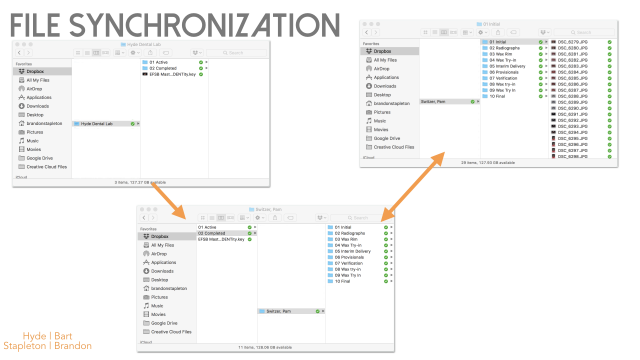
Tooth position communication
Utilizing the Spear treatment planning template, I can clearly communicate my clinical findings to Bart to give him a roadmap of my vision interpreted from the patient. This has been a valuable tool to use for immediate dentures where a try-in isn’t always possible.
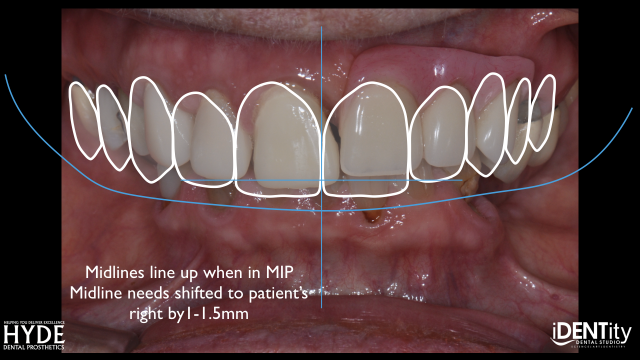
Video implementation
In addition to the Spear treatment planning template, we’ve also been using live video interaction via a FaceTime video session with Bart, the patient, and me, or a recorded video session of the patient and me with a try-in or another denture step to validate and communicate particular dynamic things that don’t communicate well on a 2D photo. This has been a great way for Bart to really step into the clinic and evaluate the patient in his own way — mostly he’s looking at phonetics and assessing the patient’s personality. This allows him to help us select the most natural tooth mold and arrangement for the patient. Our goal is to provide the patient with the most natural-appearing smile possible by incorporating characterizations from when they had teeth.
All of this information together is incredibly powerful when Bart actually examines the tooth mold boards to select teeth. Often he selects anterior teeth from multiple tooth cards, if he’s given the appropriate information to make those determinations. This allows him to have complete artistic freedom when we’re designing a smile for our patients. It’s because of this level of communication that we’ve been able to achieve the results we’ve seen thus far.
I’d like to now want to walk you through a complete communication and end result on an immediate denture that Bart and I collaborated on recently.
Case study: Carole
Carole presented to my office as a referral from the University of Kentucky College of Dentistry general practice residency. She has a long history of wintering in the South, as many retired Kentuckians do, so she’d begin treatment when she was in Kentucky, get so far along, and then leave for the winter. When she’d return, it was almost like everything done previously had already failed. This happened a couple of times until the GPR director insisted she commit to comprehensive care in private practice to accelerate her treatment. By the time I got to meet Carole, much of her upper dentition was missing and what remained was compromised. Tooth position and vertical dimension were of particular esthetic concerns.


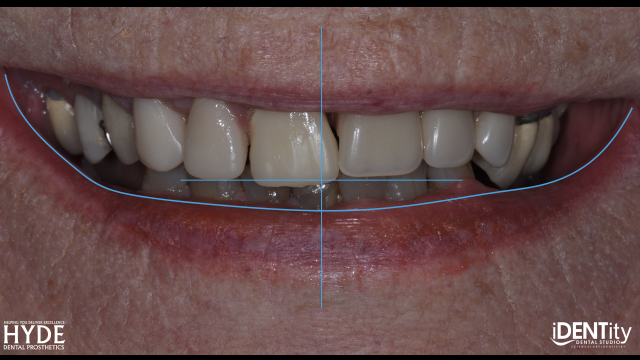
With the full series of photos, I can communicate to Bart the new ideal tooth positions. With the overlays, I can demonstrate tooth size and positions to Bart to help in selecting a mold and position.

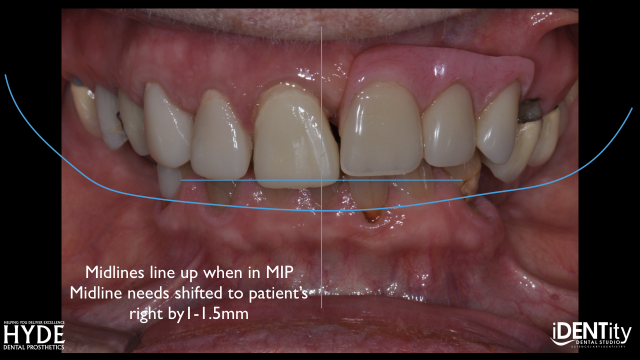
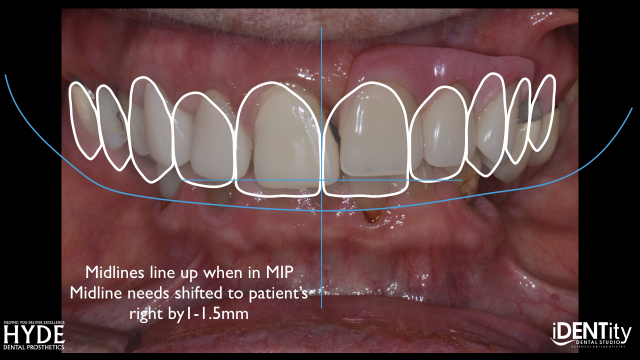
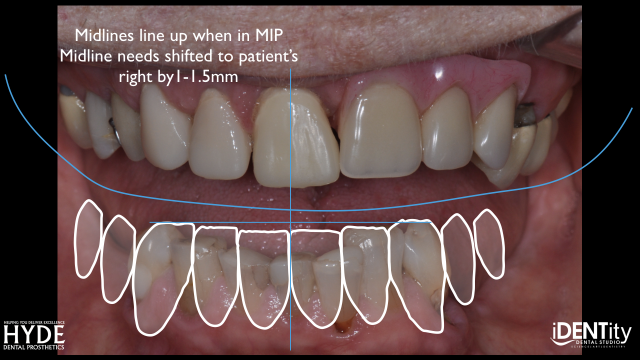
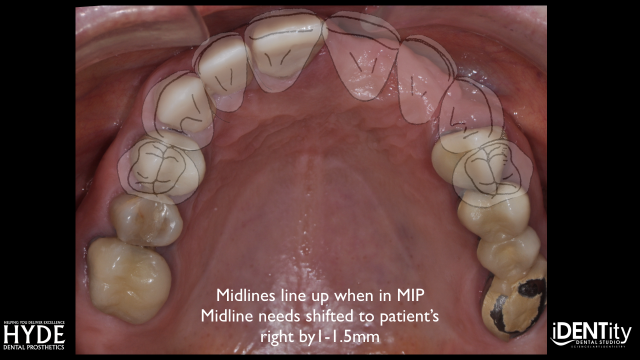

With these photos and a high degree of communication, we were able to achieve a phenomenal result! Carole was pleased with her results, and I am overwhelmingly appreciative for Bart’s talents and expertise in removable prosthodontics.



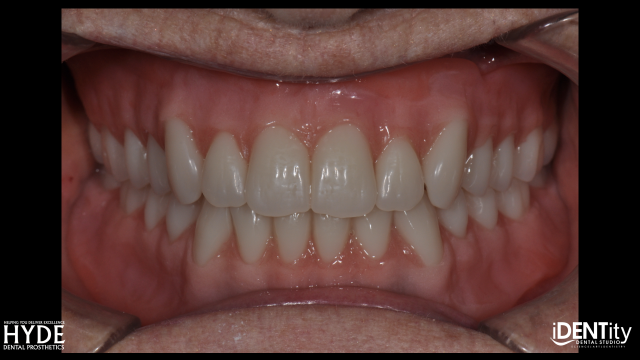
It’s important that clinicians communicate appropriately with their laboratory technicians. Not all patients require this level of communication, but it’s imperative we provide the laboratory this level of communication when necessary. Use the resources Spear has available to communicate with all the members on your team — restorative doctor, specialist and laboratory technician. When everyone is on the same level and mutual respect is given, amazing things can happen for our patients!
VIRTUAL SEMINARS
The Campus CE Experience
– Online, Anywhere
Spear Virtual Seminars give you versatility to refine your clinical skills following the same lessons that you would at the Spear Campus in Scottsdale — but from anywhere, as a safe online alternative to large-attendance campus events. Ask an advisor how your practice can take advantage of this new CE option.

By: Brandon Stapleton
Date: August 1, 2018
Featured Digest articles
Insights and advice from Spear Faculty and industry experts


